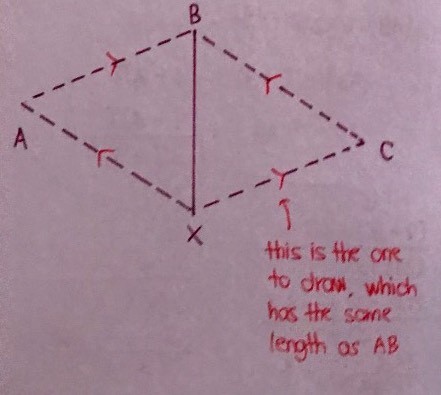Eric Nicholas K's answer to Suzie's Secondary 3 E Maths Singapore question.
done
{{ upvoteCount }} Upvotes
clear
{{ downvoteCount * -1 }} Downvotes
Suzie, the resultant force here is represented by AB. The individual components must be XA and XC (in my diagram), where XC has the same length as AB.
We draw a line from A to B in that direction and likewise for X to C, and measure its length.
We measure the length of XB as well and this length will correspond to 6.0 N.
I am not sure what that length is on your paper.
So let’s say XB is 6 cm.
Then, 1 cm represents 1.0 N.
If you use a ruler and measure XC to be say 7 cm, then the magnitude of XC is 7.0 N.
We draw a line from A to B in that direction and likewise for X to C, and measure its length.
We measure the length of XB as well and this length will correspond to 6.0 N.
I am not sure what that length is on your paper.
So let’s say XB is 6 cm.
Then, 1 cm represents 1.0 N.
If you use a ruler and measure XC to be say 7 cm, then the magnitude of XC is 7.0 N.
Date Posted:
3 years ago
It’s a “to-scale” diagram, so we can use lengths to make comparisons. A catch is that we must draw such scale diagrams accurately.
Thank you! It helped a lot!



